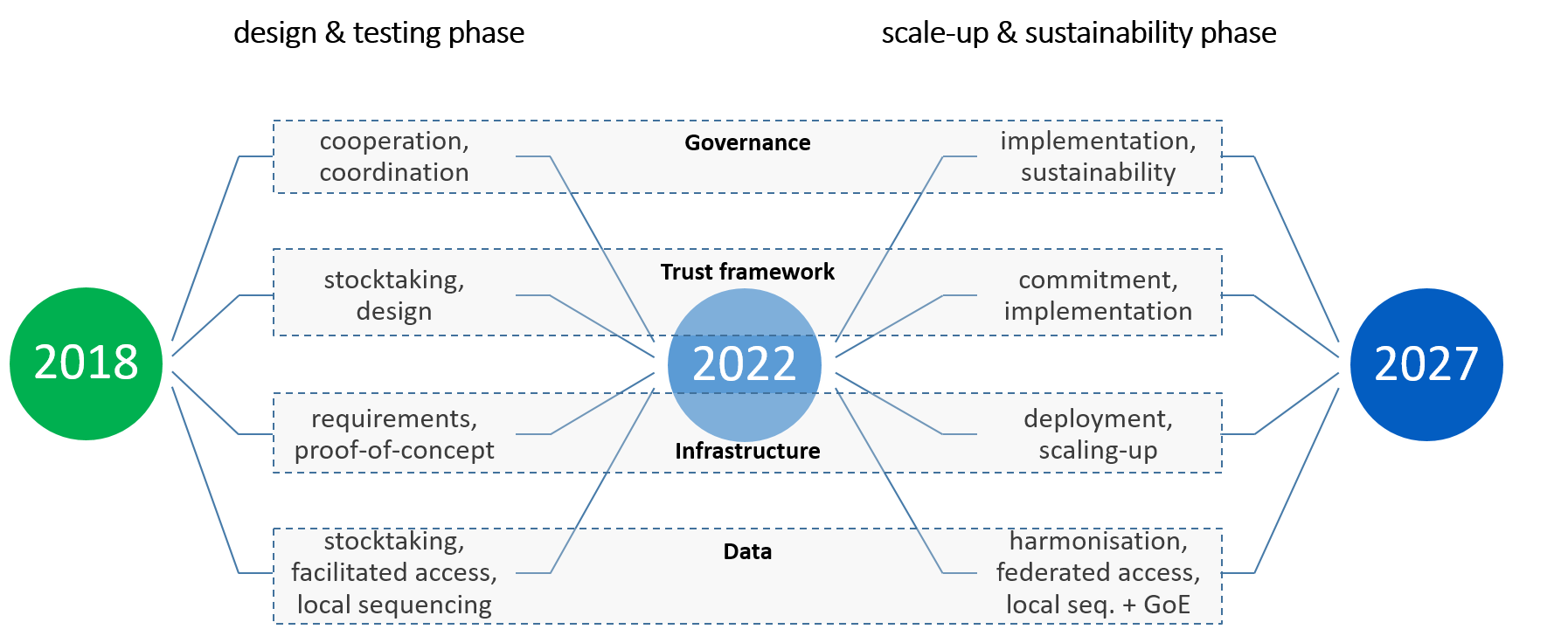As a country where natural resources are scarce, Singapore has created alternative sources of water for its residents. But with climate change and the challenges it poses to safe drinking water sources, the Singapore government has found itself in need of more sustainable solutions to secure water. Through the Singapore Water Corporation, it has innovated in three key areas: recycling, clean energy production, and saving electricity and fuel consumption in operations.
The challenge of climate change has put the world in front of a new reality, Despite the global nature of this challenge, In some countries, it is multiplied challenges, For reasons related to geographical location, demographics and abundance of natural resources.
In Singapore, which has historically suffered from resource scarcity, The government has developed a variety of sources to secure water, It developed what it called the "Four National Headwaters Strategy" to manage the water system in an integrated manner and innovative methods such as seawater treatment by salt filtration through artificial membranes. But the commitment to tackle climate change makes it more difficult to meet water needs. Demand is expected to double by 2060, With it, the rate of energy required to produce it will be 4 times multiplied, causing massive greenhouse gas emissions, This hinders the goal of reaching net-zero levels of these emissions by 2050.
Therefore, The Singapore Water Corporation has begun looking for ways to decarbonize its operations and mitigate its environmental impact. In late 2021, it launched a challenge to attract innovations and research that serve this goal. And allocated him 6.5 million dollars, Taking partnerships between the public and academic sectors as a model to encourage innovation.
First thing The Foundation has partnered with the University of California, Los Angeles, to launch a project to research less expensive solutions than traditional carbon sequestration processes to eliminate carbon dioxide. The two parties came up with an innovation based on simulating the natural process that produces seashells through which carbon is analyzed in seawater. The process is based on the fusion of dissolved carbon gas with certain metals to produce the two materials that make up the shells, They are limestone and magnesite, which can be safely disposed of or pumped into waterways later.
For water treatment, ENEC has built a new plant that not only treats seawater, And even fresh water that collects during the rainy season. Technically The enterprise develops new ultra-permeable filter membranes, It explores the prospects of replacing traditional membranes with ceramic ones. Water filtration through the developed membranes reduces the energy required for water treatment by more than 50%, As for ceramic membranes, They are likely to be more energy and cost efficient, lasting four times longer than conventional membranes and reducing water wasted during the process.
In the same vein, The Singapore Water Corporation is collaborating with other academic parties to remove carbon dioxide from the production of renewable fuels, By producing wastewater in special treatment plants, Through a process using the aqueous ammonia compound chosen for two reasons, namely its ability to absorb larger amounts of carbon dioxide, Its rate of erosion is slow compared to conventional chemicals. ENEC is also studying the feasibility of removing carbon dioxide from biogas and using it in materials normally classified as waste such as ash to produce aggregate and sand and use them in the reconstruction and land reclamation sector.
In addition, The Foundation adopts a circular economy approach, By-products of one process are reused to benefit another process or the waste of one facility constitutes a supplier in another. Together with the National Environment Agency, it launched an integrated waste and water treatment facility. It is the first in the world in terms of energy self-sufficiency, Food waste is also employed to increase renewable fuel production at the water reclamation plant. It leverages the carbon content to produce more biogas to generate electricity. Refining operations increase production by 40% compared to using wastewater alone, Fuel boosts electricity generation and enables the export of excess energy to the public feeder grid.
ENEC continues to work to conserve and recycle water between homes and industrial facilities. In conjunction with the gradual replacement of enterprise vehicles with diesel-powered internal combustion engines with electric ones, With the aim of operating all vehicles with clean energy by 2040.
As part of the transition to clean energy sources, ENEC is testing the solar floating panel system, Large water reservoirs are used to collect water and generate electricity, such as the "Tinghe" reservoir, which contains the largest floating solar panel farm spanning an area of 45 hectares. It operates 5 local water treatment plants through more than 122,000 panels distributed over 10 floating islands generating power at a peak of 60 MW. ENEC is currently seeking to establish two new floating farms in the lower Seletar Dam and the Pandan Reservoir. On an area of 1.8 hectares.
Floating solar power plants reduce carbon emissions by about 32 kilotons per year, This is equivalent to the impact of 7,000 cars. Most importantly, this mechanism allows widespread use of sunlight, This is challenging because of the density of urban sprawl and the limited land available in Singapore. The Singapore Water Corporation generates approximately 70 MW via ground and floating solar power plants. This is enough to cover 8% of the annual needs of the institution. In the long run, ENEC plans to reduce total emissions of water treatment operations by 60% by 2050.
References:






